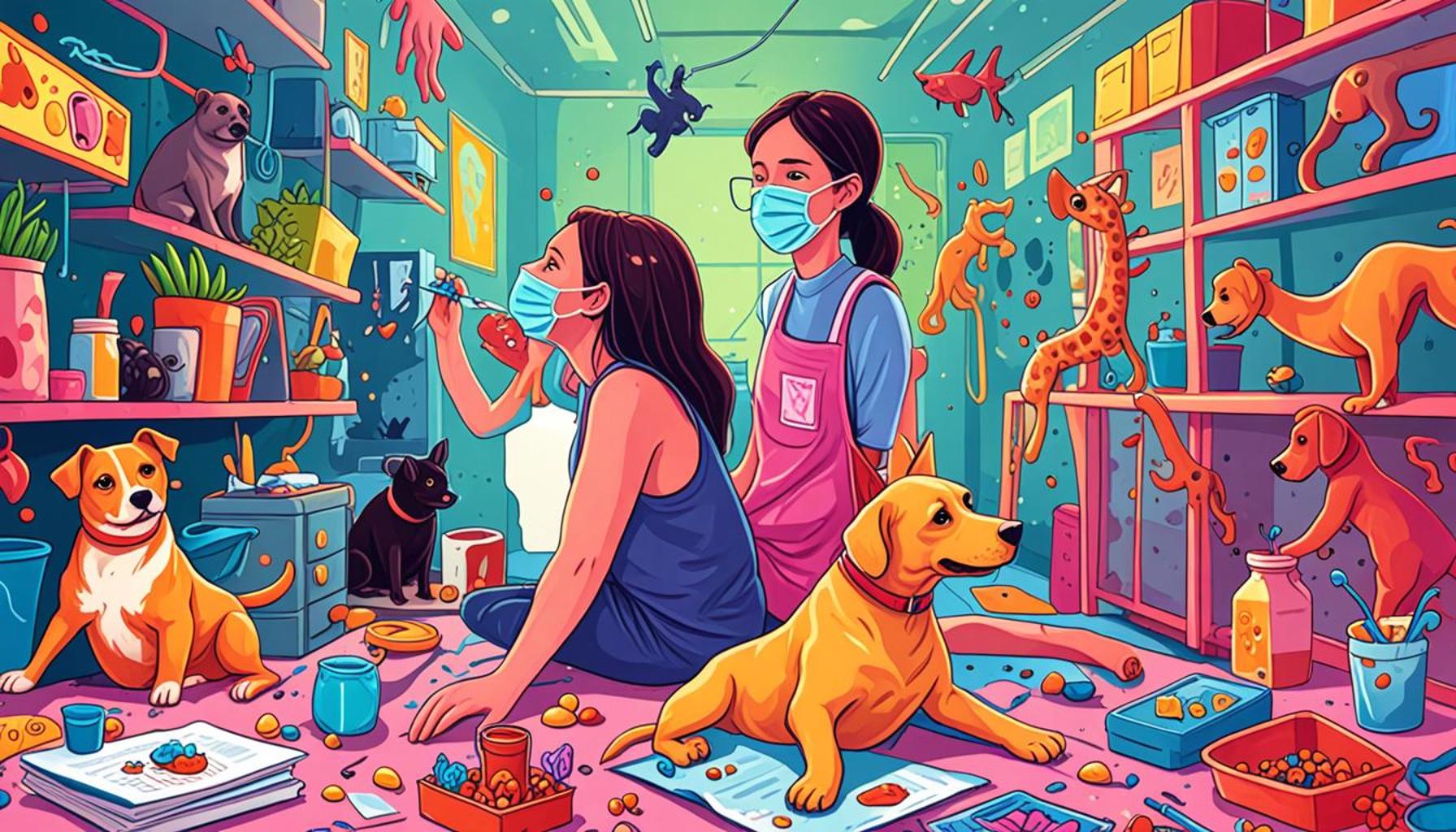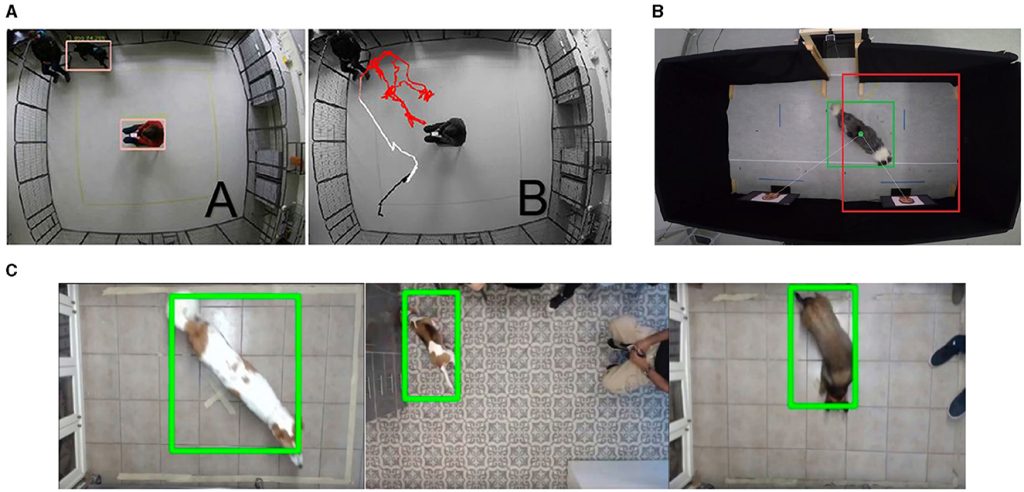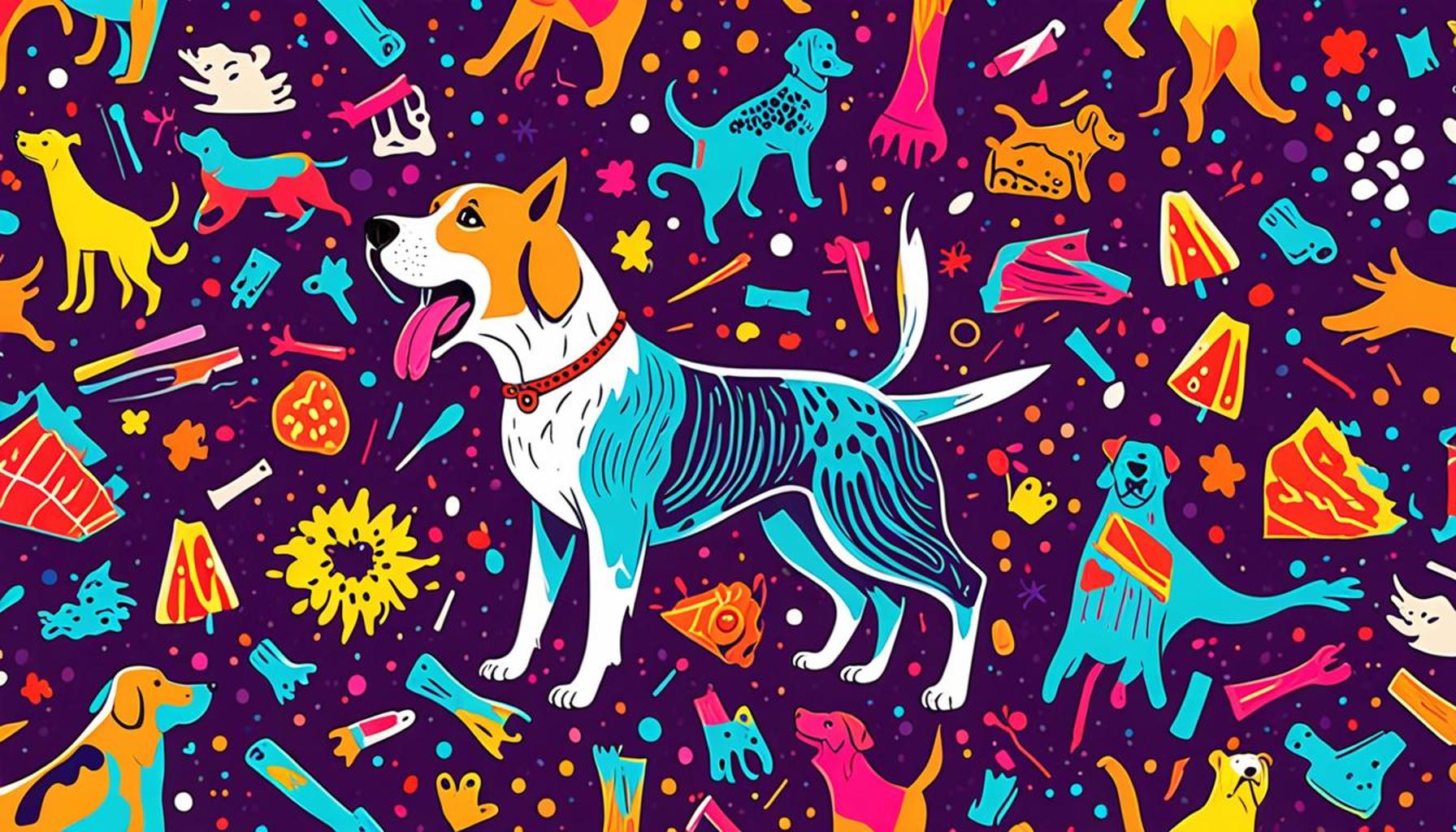Changes in Pet Behavior During the Pandemic: An Analysis of Social Impact

The Impact of Pandemic Life on Pets and Their Behavior
The COVID-19 pandemic ushered in a wave of transformations not just for human society but for our pets as well. Living through lockdowns and remote work environments, many pets were thrust into a world of altered routines, leading to significant changes in their behavior. As millions adapted to new lifestyles, it became clear that our four-legged companions were deeply affected by the emotional and social upheavals around them.
One significant trend noticed among pets was the rise in separation anxiety. With many owners home 24/7, pets quickly came to expect their human companions to be by their side. When life returned to a semblance of normalcy, the abrupt transition back to being left alone resulted in distress for many animals, leading to symptoms such as excessive barking, destructive behavior, and attempts to escape their confines. In fact, the American Kennel Club noted a marked increase in behavioral issues associated with separation as pets struggled to adapt to being without their owners once again.
In addition to separation anxiety, there was a palpable heightened demand for attention. As owners juggled work-from-home tasks, pets often sought engagement, demanding playtime or companionship. This behavior was particularly prevalent in younger animals, leading to a cycle where owners had to balance their professional responsibilities with the needs of their pets. The impact extended beyond simple attention-seeking; it found a voice in increased nudging, pawing, and sometimes, audible protestations from animals craving interaction.
Another area significantly impacted was exercise patterns. With traditional exercise avenues such as gyms and parks experiencing closures or limitations, pet owners began to explore alternative methods to keep their pets active. Innovative solutions emerged, such as virtual dog training classes, online pet fitness sessions, and even socially distanced dog parks. Yet, the challenge remained; many pets, especially those accustomed to high-energy routines, faced the risk of becoming overweight or lethargic due to decreased physical activity levels.
As pet ownership rose dramatically, affecting over 70% of households in the United States, understanding these behavioral shifts became essential. Reports from pet owners highlighted new or intensified issues including destructive actions, where pets resorted to chewing furniture or scratching surfaces as outlets for pent-up energy and anxiety. Similarly, hyperactivity surged, with animals exhibiting an increase in erratic behavior—dashing around the house or becoming overly excited at the sight of their owners. Yet, just as some pets became more social and demanding, others showcased a trend towards social withdrawal, exhibiting reluctance to engage with unfamiliar humans or animals outside their immediate family, reflecting a protective instinct exacerbated by the fear and uncertainty of the pandemic.

This intricate tapestry of changed behavior reinforces the significance of nurturing the bond between humans and their pets in these challenging times. It’s crucial for pet owners to remain attuned to their companions’ needs, fostering an environment where emotional well-being and healthy habits can thrive amid ongoing fluctuations in daily life. By exploring these changes in pet behavior, we open a dialogue about how we can best support our furry friends, ensuring their happiness and health as we navigate the complexities of post-pandemic life.
DISCOVER MORE: Click here to learn about your pet’s feelings
Understanding Behavioral Shifts in Pets: Insights from the Pandemic
The context of the pandemic reshaped not only day-to-day human interactions but also the dynamics between pets and their owners. One of the most significant observations was the marked increase in acute stress responses among pets, catalyzed by the complex emotional environment their owners navigated. The prolonged uncertainty and anxiety experienced by millions of people were often mirrored in their pets, with animals displaying signs of distress that manifested in numerous ways.
For many pet owners, the onset of the pandemic brought to light a myriad of behavioral issues that had previously gone unnoticed or were minimal before. This prompted a deeper understanding of how environmental changes can directly impact animal behavior. Notably, the confinement periods led pets, especially dogs, to develop a new awareness of their surroundings. Owners reported changes such as increased vigilance in their pets, with animals often alerting owners to the slightest sounds or movements, a behavior likely fueled by the heightened sense of alert that many humans felt during these uncertain times.
The Role of Charting New Routines
As families adapted to work-from-home setups and remote learning, routines were altered significantly. Pets became accustomed to a new daily schedule that revolved around their owners’ activities, leading to altered behavioral patterns. Some of the noteworthy changes observed include:
- Increased Meal Times: With more time at home, many pet owners fell into the habit of feeding their pets more frequently, leading to changes in dietary habits that could affect overall health.
- Heightened Reactive Behavior: As pets adjusted to the constant presence of their owners, many exhibited increased reactivity to environmental stimuli, exhibiting behaviors such as barking at passersby or becoming anxious when the doorbell rang.
- Heightened Affection Needs: Owner-pet bonding shifted, with many pets demanding attention more fervently, showcasing signs of clinginess—behavior likely stemming from the emotional reassurance they sought during uncertain times.
Moreover, the phenomenon of pet socialization challenges became pronounced. With fewer opportunities to interact with other animals or people—due to social distancing measures—pets faced difficulties adjusting to encounters outside their household. Many animals that thrived on regular social interactions found themselves hesitant or fearful when finally introduced back into a community setting. Veterinary experts concurred that this newfound hesitance highlighted the need for gradual re-engagement strategies, allowing pets to reintegrate healthily.
In a broader scope, the relationship between pets and societal well-being took precedence during the pandemic. Research indicated that pet ownership correlates with improved mental health outcomes for people, a crucial insight that drew attention to the role pets played as emotional support during this turbulent time. As people sought comfort from their pets, the realization that these companions were experiencing similar stressors underscored a mutual dependency that many had not previously acknowledged.
Ultimately, recognizing the intricate connections between pet behavior and societal changes during the pandemic is vital for fostering healthier and more fulfilling relationships between pets and their owners. Understanding these behavioral trends can empower pet owners to proactively address emerging issues, enhancing the quality of their pets’ lives and their own in the process. As we continue to transition towards post-pandemic life, maintaining awareness of these changes can help ensure that both pets and owners navigate their new normal smoothly.
Changes in Pet Behavior During the Pandemic: An Analysis of Social Impact
The global pandemic has reshaped numerous aspects of daily life, extending its effects to our beloved pets. The shift in human behavior, characterized by increased time spent at home, has significantly influenced pet behavior as well. Here, we delve deeper into some of the notable changes observed in pets during this period.Pets, like humans, are creatures of habit and thrive on routine. During the pandemic, many pets experienced a *dramatic change in their daily schedules*. With their owners working from home, pets often enjoyed increased attention and companionship. This newfound presence has helped alleviate some instances of anxiety and separation distress exhibited by pets when their owners were away for long periods. As a result, owners have reported enhanced bonding experiences with their animals, leading to *greater emotional well-being* for both parties.Conversely, as humans began to adopt new routines, some pets faced the impact of reduced socialization with other animals. Dog parks and community activities saw a decline, leading to altered social behaviors in dogs. This absence of interaction may have contributed to an uptick in aggression and fear-based responses among pets that had previously thrived on social engagement. Cats, too, have experienced shifts; with an increase in home environments, many have shown signs of increased territorial behavior as they adjust to their owners’ constant presence.Moreover, the surge in adoptions during the pandemic has introduced new dynamics within households. Many people sought the companionship of pets during lockdowns, which has led to increased responsibility and care for these animals. While this has positively impacted the welfare of many pets, it also raises concerns regarding the long-term commitment from new pet owners. The novelty of a pet during lockdown may not reflect the challenges of pet ownership that arise in a post-pandemic world.Tracking and understanding these changes in pet behavior are crucial not only for pet owners but also for veterinary professionals and behaviorists. Insights into the altered habits of pets can help in devising strategies to mitigate behavioral issues and improve the well-being of pets as we navigate a new normal. Continued observation and research into these social impacts will provide a deeper understanding of the evolving dynamics between pets and their owners.
| Category 1 | Category 2 |
|---|---|
| Increased Human Interaction | Pets experienced more quality time with owners, enhancing emotional bonds and reducing anxiety. |
| Reduced Socialization Opportunities | Limited access to parks and community activities led to behavioral issues related to aggression and fear. |
As we explore these behavioral changes, it’s essential to recognize the influence of our lifestyles on our pets’ well-being during these unprecedented times. Understanding these dynamics can guide us in ensuring a healthier environment for our animal companions.
DISCOVER MORE: Click here for innovative training tips
Socialization and Reintegration: The Pet Perspective
The pandemic brought about significant challenges in the realm of pet socialization. With the enforcement of social distancing measures, public spaces became less accessible, impacting the ability of pets to interact with their environments and other animals. As lockdown restrictions began to ease, many pet owners reported experiencing difficulties in reacquainting their pets with the outside world. This superficial alteration in normal routines triggered an observable increase in fear-based behaviors among dogs, cats, and other household animals.
A study conducted by the American Veterinary Medical Association (AVMA) revealed that nearly 40% of pet owners noted their dogs exhibited signs of anxiety when encountering new situations or other animals after prolonged social isolation. This included altered speeds of approach, hesitance to engage with other dogs, and, in some cases, regression in basic training lessons that had formerly prompted confident behavior. A solution proposed by behaviorists advocates for a systematic desensitization approach, wherein pets are gradually exposed to new environments and stimuli in a controlled manner—allowing them to acclimatize without overwhelming stress.
The Impact of Human Behavior on Pet Psychology
As pet owners navigated their own post-pandemic adjustments, their behaviors also impacted their pets. Consistent routines led to a unique exchange; when owners departed from home for work or social activities, their pets often struggled with separation anxiety, having grown accustomed to constant companionship during lockdowns. The phenomenon of separation anxiety surged as pets began exhibiting panic-like behaviors when left alone, including excessive barking, destructive tendencies, and inappropriate elimination.
Moreover, some previously well-adjusted pets started to display regressive behaviors, such as pica—eating non-food objects—indicative of stress and insecurity. Statistics from the Pet Food Institute showed a remarkable increase in pet behavioral issues reported during 2021, with many owners seeking the help of professional trainers or veterinary behaviorists to mitigate these challenges.
Interestingly, the emotional states of pets mirrored those of their human counterparts, providing a window into the psychological interplay between them. Studies pointed out that pets are sensitive to their owners’ emotions—heightened stress or anxiety in humans could easily translate into similar feelings in animals, demonstrating the vital need for self-care practices among pet owners to foster healthier environments. Many experts suggest incorporating daily routines that include walks, essential playtime, and enrichment activities to ease both owner and pet into a new rhythm.
The pandemic also highlighted the increased role of technology in managing pet behaviors. The rise of telehealth services for pets saw many owners consulting veterinarians and animal behaviorists online for guidance. This shift not only aided in addressing immediate behavioral concerns but also offered a greater awareness of available resources for enriching pet lifestyles. Pet-training apps flourished in popularity, equipping owners with tools to implement training methods from the comfort of their homes, paving the way for an innovative approach to pet care in the digital age.
As pets and their humans navigate the aftermath of the pandemic, it is essential for owners to remain vigilant to the changes observed in their pets’ behaviors. Incorporating gradual socialization, maintaining consistent routines, and utilizing technology for assistance can help ease the transition and strengthen the bond between owner and pet in the evolving landscape of pet ownership.
DON’T MISS: Click here to learn why pet vaccinations are crucial
Conclusion: Navigating the New Normal in Pet Behavior
The impact of the pandemic on our furry companions has been profound and multifaceted, revealing significant alterations in pet behavior largely driven by changes in human lifestyle and societal dynamics. As we emerged from lockdowns, pet owners faced the challenging task of reintegrating their pets into a world that had transformed, highlighting the intricate bond between pet psychology and human behavior. The rise in anxiety-related issues, such as separation anxiety and fear-based behaviors, underscores the need for a compassionate and understanding approach to pet care.
Transitioning back to pre-pandemic routines poses further challenges; owners must be intentional about fostering environments that promote gradual socialization and positive reinforcement. The utilization of telehealth services and pet-training apps has revolutionized the accessibility of professional guidance, equipping owners with essential tools to ensure both their pets’ and their own emotional well-being. As awareness of these resources grows, pet owners are better positioned to address behavioral concerns through informed, proactive measures.
Ultimately, as we reflect on the changes witnessed during this unprecedented time, it is imperative to adopt a holistic view of pet ownership. Understanding the psychological implications of the pandemic on pets, alongside the need for consistent routines and enriched interactions, can create a nurturing environment conducive to mental health for both pets and their owners. Moving forward, the lessons learned during these trying times will not only shape how we approach pet care but will also enhance the invaluable relationship we share with our pets.


